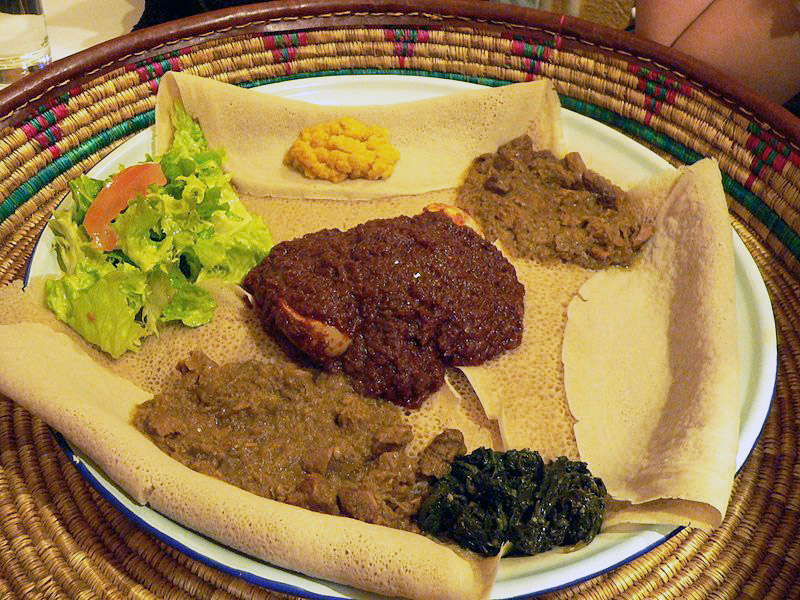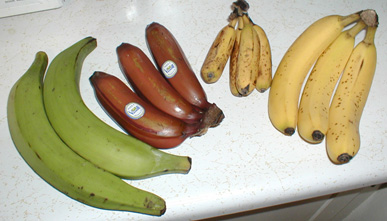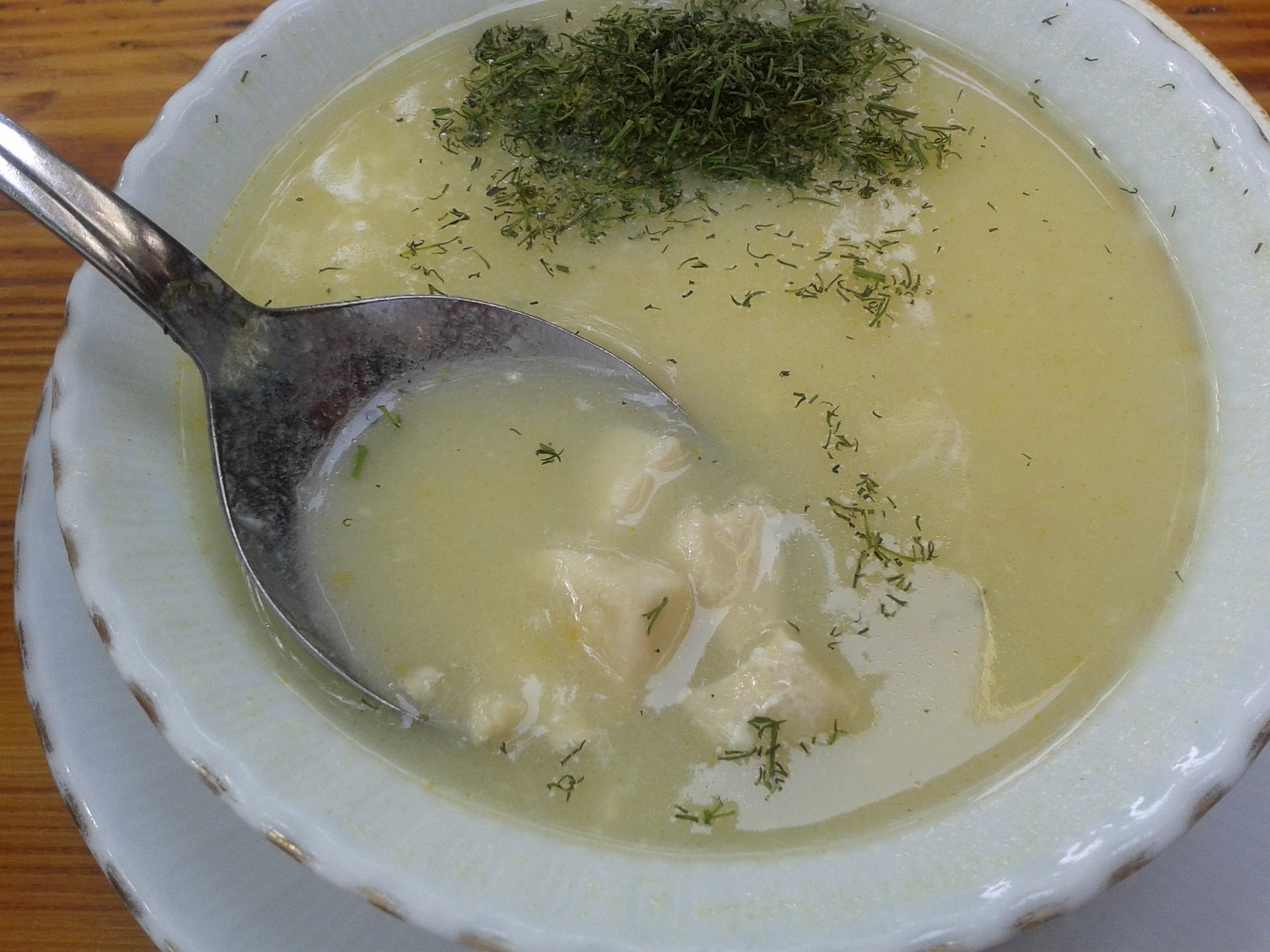|
Racuchy
Racuchy (pronounced ) is a traditional Polish dish from the same family of foods as the crêpe and similar to American or Scottish pancakes. Racuchy are made from flour, milk, eggs, sugar and a pinch of salt. Racuchy are made with yeast or, in other versions, baking powder or baking soda. Racuchy are pan fried in oil. In Poland, racuchy are usually eaten for dinner, snack or supper. Racuchy can be eaten plain, sprinkled with sugar, or topped with powdered sugar. In alternative versions some cream or sour cream can be used. In some regions, racuchy are prepared more savoury and served with fish soup or mushroom soup during the Christmas Eve dinner. Stuffed racuchy The most popular version of racuchy is stuffed with slices of apple and served with sugar. Sometimes, in more modern versions, other fruits can be used, for instance, bananas. There is also a savoury sweet version of stuffed racuchy, filled with potatoes. See also * Ruchanki Ruchanki is a flat, ova ... [...More Info...] [...Related Items...] OR: [Wikipedia] [Google] [Baidu] |
List Of Stuffed Dishes
This is a list of stuffed dishes, comprising dishes and foods that are prepared with various fillings and stuffings. Some dishes are not actually stuffed; the added ingredients are simply spread atop the base food, as one cannot truly stuff an oyster or a mussel or a pizza. Stuffed dishes * A-gei * Apam balik * Arancini * Arem-arem * Badrijani * Bakpia Pathok * Ballotine * Bánh bao * Bánh chưng * Bánh lá * Bánh tét * Bánh xèo * Barbajuan * Bhendi fry * Bichak * Blini * Bolani * Boliche * Börek * Botillo * Cachopo * Carimañola * Carpetbag steak * Chả giò * Chatti pathiri * Chaudin – a meat dish from southern Louisiana, it is a sausage-like variant made from ingredients such as spices, pork, rice and vegetables that are sewn up in a pig's stomach, which is then cooked. The dish is sometimes smoked. * Chebureki * Chicken Kiev * Chile relleno * Chiles en nogada * Cordon bleu * Crappit heid – a traditional Scots fish course, con ... [...More Info...] [...Related Items...] OR: [Wikipedia] [Google] [Baidu] |
Pancakes
A pancake (or hotcake, griddlecake, or flapjack) is a flat cake, often thin and round, prepared from a starch-based batter that may contain eggs, milk and butter and cooked on a hot surface such as a griddle or frying pan, often frying with oil or butter. It is a type of batter bread. Archaeological evidence suggests that pancakes were probably eaten in prehistoric societies. The pancake's shape and structure varies worldwide. In the United Kingdom, pancakes are often unleavened and resemble a crêpe. In North America, a leavening agent is used (typically baking powder) creating a thick fluffy pancake. A ''crêpe'' is a thin Breton pancake of French origin cooked on one or both sides in a special pan or crepe maker to achieve a lacelike network of fine bubbles. A well-known variation originating from southeast Europe is a '' palačinke'', a thin moist pancake fried on both sides and filled with jam, cream cheese, chocolate, or ground walnuts, but many other fillings� ... [...More Info...] [...Related Items...] OR: [Wikipedia] [Google] [Baidu] |
Polish Pastries
Polish may refer to: * Anything from or related to Poland, a country in Europe * Polish language * Poles, people from Poland or of Polish descent * Polish chicken *Polish brothers (Mark Polish and Michael Polish, born 1970), American twin screenwriters Polish may refer to: * Polishing, the process of creating a smooth and shiny surface by rubbing or chemical action ** French polishing, polishing wood to a high gloss finish * Nail polish * Shoe polish * Polish (screenwriting), improving a script in smaller ways than in a rewrite See also * * * Polonaise (other) A polonaise ()) is a stately dance of Polish origin or a piece of music for this dance. Polonaise may also refer to: * Polonaises (Chopin), compositions by Frédéric Chopin ** Polonaise in A-flat major, Op. 53 (french: Polonaise héroïque, lin ... {{Disambiguation, surname Language and nationality disambiguation pages ... [...More Info...] [...Related Items...] OR: [Wikipedia] [Google] [Baidu] |
Powdered Sugar
Powdered sugar, also called confectioners' sugar, or icing sugar, is a finely ground sugar produced by milling granulated sugar into a powdered state. It usually contains between 2% and 5% of an anti-caking agent – such as corn starch, potato starch or tricalcium phosphate – to absorb moisture, prevent clumping, and improve flow. Although most often produced in a factory, a proxy for powdered sugar can be made by processing ordinary granulated sugar in a coffee grinder, or by crushing it by hand in a mortar and pestle. Use Powdered sugar is used in industrial food production when a quick-dissolving sugar is required. Home cooks use it principally to make icing or frosting and other cake decorations. It is often dusted onto baked goods to add a subtle sweetness and delicate decoration. Powdered sugar is available in varying degrees of fineness, most commonly XXX, XXXX, and 10X: the greater the number of Xs, the finer the particles. Finer particles absorb more m ... [...More Info...] [...Related Items...] OR: [Wikipedia] [Google] [Baidu] |
Christmas Food
Christmas is an annual festival commemorating the birth of Jesus Christ, observed primarily on December 25 as a religious and cultural celebration among billions of people around the world. A feast central to the Christian liturgical year, it is preceded by the season of Advent or the Nativity Fast and initiates the season of Christmastide, which historically in the West lasts twelve days and culminates on Twelfth Night. Christmas Day is a public holiday in many countries, is celebrated religiously by a majority of Christians, as well as culturally by many non-Christians, and forms an integral part of the holiday season organized around it. The traditional Christmas narrative recounted in the New Testament, known as the Nativity of Jesus, says that Jesus was born in Bethlehem, in accordance with messianic prophecies. When Joseph and Mary arrived in the city, the inn had no room and so they were offered a stable where the Christ Child was soon born, with angels proclai ... [...More Info...] [...Related Items...] OR: [Wikipedia] [Google] [Baidu] |
Ruchanki
Ruchanki is a flat, oval racuszki from bread dough (providing a light sour taste) or sponge cake (sweet taste), hot fried on fat. Formerly, ruchanki were produced from left over bread dough. The bread dough version was popularly eaten instead of bread for inter alia breakfast. Ruchanki baked from wheat flour and yeast were traditionally baked for carnivals. These are served hot, topped with powdered sugar or white sugar. In Kashubia these are served with apples. Ruchanki are enlisted on the list of traditional produce of the Pomeranian Voivodeship. The official list states, that the average diameter of ruchanki should be between 5 and 7 cm and their thickness at 0.5 cm. See also *Pomeranian cuisine Pomeranian cuisine generally refers to dishes typical of the area that once formed the historic Province of Pomerania in northeast Germany and which included Stettin (now Szczecin) and Further Pomerania. It is characterised by ingredients produce ... References {{Reflist ... [...More Info...] [...Related Items...] OR: [Wikipedia] [Google] [Baidu] |
Bananas
A banana is an elongated, edible fruit – botanically a berry – produced by several kinds of large herbaceous flowering plants in the genus '' Musa''. In some countries, bananas used for cooking may be called "plantains", distinguishing them from dessert bananas. The fruit is variable in size, color, and firmness, but is usually elongated and curved, with soft flesh rich in starch covered with a rind, which may be green, yellow, red, purple, or brown when ripe. The fruits grow upward in clusters near the top of the plant. Almost all modern edible seedless ( parthenocarp) bananas come from two wild species – ''Musa acuminata'' and ''Musa balbisiana''. The scientific names of most cultivated bananas are ''Musa acuminata'', ''Musa balbisiana'', and ''Musa'' × ''paradisiaca'' for the hybrid ''Musa acuminata'' × ''M. balbisiana'', depending on their genomic constitution. The old scientific name for this hybrid, ''Musa sapientum'', is no longer used. ''Mu ... [...More Info...] [...Related Items...] OR: [Wikipedia] [Google] [Baidu] |
Apple
An apple is an edible fruit produced by an apple tree (''Malus domestica''). Apple trees are cultivated worldwide and are the most widely grown species in the genus '' Malus''. The tree originated in Central Asia, where its wild ancestor, '' Malus sieversii'', is still found today. Apples have been grown for thousands of years in Asia and Europe and were brought to North America by European colonists. Apples have religious and mythological significance in many cultures, including Norse, Greek, and European Christian tradition. Apples grown from seed tend to be very different from those of their parents, and the resultant fruit frequently lacks desired characteristics. Generally, apple cultivars are propagated by clonal grafting onto rootstocks. Apple trees grown without rootstocks tend to be larger and much slower to fruit after planting. Rootstocks are used to control the speed of growth and the size of the resulting tree, allowing for easier harvesting. There ... [...More Info...] [...Related Items...] OR: [Wikipedia] [Google] [Baidu] |
Christmas Eve
Christmas Eve is the evening or entire day before Christmas Day, the festival commemorating the birth of Jesus. Christmas Day is observed around the world, and Christmas Eve is widely observed as a full or partial holiday in anticipation of Christmas Day. Together, both days are considered one of the most culturally significant celebrations in Christendom and Western society. Christmas celebrations in the denominations of Western Christianity have long begun on Christmas Eve, due in part to the Christian liturgical day starting at sunset, a practice inherited from Jewish tradition and based on the story of Creation in the Book of Genesis: "And there was evening, and there was morning – the first day." Many churches still ring their church bells and hold prayers in the evening; for example, the Nordic Lutheran churches. Since tradition holds that Jesus was born at night (based in Luke 2:6-8), Midnight Mass is celebrated on Christmas Eve, traditionally at mid ... [...More Info...] [...Related Items...] OR: [Wikipedia] [Google] [Baidu] |
Mushroom Soup
Cream of mushroom soup is a simple type of soup where a basic roux is thinned with cream or milk and then mushrooms and/or mushroom broth are added. It is well known in North America as a common type of condensed canned soup. Cream of mushroom soup is often used as a base ingredient in casseroles and comfort foods. This use is similar to that of a mushroom-flavored gravy. History Soups made with cream and mushrooms are much older than the canned variety. Ancient Italian (Salsa colla) and French ( Béchamel) cream sauces, and soups based on them have been made for many hundreds of years. In America, the Campbell Soup Company began producing its well-known "Cream of Mushroom Soup" in 1934. Regional usage Canned cream of mushroom soup has been described as "America's béchamel". In Minnesota, the ingredient is often called "Lutheran binder," in reference to its thickening properties and its prominence in hotdish recipes, especially in Lutheran church cookbooks. See also * Bisq ... [...More Info...] [...Related Items...] OR: [Wikipedia] [Google] [Baidu] |
Fish Soup
Fish soup is a food made by combining fish or seafood with vegetables and stock, juice, water, or another liquid. Hot soups are additionally characterized by boiling solid ingredients in liquids in a pot until the flavors are extracted, forming a broth. Traditionally, soups are classified into two main groups: ''clear soups'' and ''thick soups''. The established French classifications of clear soups are '' bouillon'' and ''consommé''. Thick soups are classified depending upon the type of thickening agent used: '' bisques'' are made from puréed shellfish or vegetables thickened with ''cream''; cream soups may be thickened with béchamel sauce; and '' veloutés'' are thickened with eggs, butter, and cream. Other ingredients commonly used to thicken soups and broths include rice, lentils, flour, and grains; many popular soups also include carrots and potatoes. Fish soups are similar to fish stews, and in some cases there may not be a clear distinction between the two; however, fi ... [...More Info...] [...Related Items...] OR: [Wikipedia] [Google] [Baidu] |



.jpg)


.jpg)
